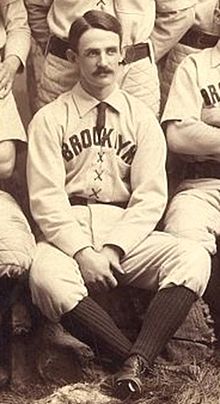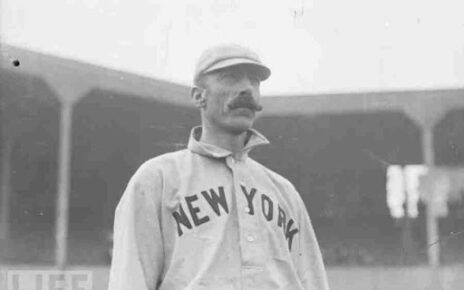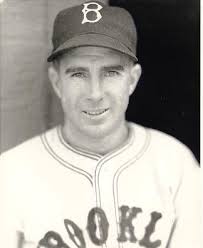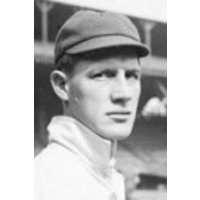In the earlier days of baseball two-way play was fairly common. The mound being closer, batters being able to call out the pitches they wanted, and more made it an era where players could pitch and be a position player more frequently. These circumstances are what gave us a player like Bob Caruthers. Good old Bob spent years plugging away as a two-way player and though the baseball he played was much different from the baseball to come it’s still baseball and it’s still worth writing about and discussing.
Caruthers got his start as an outfielder, but after only one season he began the Bob Caruthers Two-Way Experience. In 1884 he entered the year with the Minneapolis Millers of the unaffiliated Northwest League. In 292.1 innings, 36 games, on the mound, Caruthers had a startling stat line. He had an ERA of 0.83 but a RA/9 of 4.43 and a WHIP of 0.968. Throughout his career, Caruthers would consistently have a lower ERA than RA/9, but a gap as huge as in 1884 is something else. Caruthers had 193 at-bats in 21 games in the outfield and posted a slash line of .218/?/.269. As first attempts at being a two-way player go, not all that promising.
Later in 1884, the 20-year-old found himself sold to the American Association’s St. Louis Browns. He continued his two-way play appearing in 13 games as a pitcher and 16 games as a right fielder. In 86 plate appearances he improved plenty as a hitter, slashing .268/.302/.366 for an OPS+ of 112. 82.2 innings on the mound saw the Tenessee native put up a 126 ERA+ on the back of an 0.919 WHIP and 2.61 ERA. Combined Caruthers posted an rWAR of 1.6 for the Browns. Not great, but an improvement from his time with the Millers.
1885 was a pitching only year but in 1886 Caruthers was back to playing both ways. That season he helped guide the Browns to a World’s Series (yes, that’s right, this was a different WS than it’s successor) title. He pitched 387.1 innings in 44 games and put up an impressive 2.32 ERA, 1.056 WHIP, and 147 ERA+. He also posted an ERA of 2.42 in 3 WS games, including one shutout. With the bat in his hand, Caruthers hit .334/.448/.527 with an OPS+ of 201 in 382 plate appearances (this was spread across 2 games at second base, 1 in left field, and 42 in right field). The Tennesseean also contributed 21 doubles, 14 triples, and 26 stolen bases. In the WS he cooled down considerably but still slashed .250/.280/.458 in 25 times at the dish. Caruthers had a mammoth 1886 and put up an rWAR of 11.5 in one of the best two-way seasons in the history of baseball.
Come 1887 Caruthers was one of the best players in baseball without question. He followed up his tremendous 1886 campaign with a lesser, but still very good 1887. In the process of taking the Browns back to the WS yet again he appeared in 39 games as a pitcher, 7 at first base, 3 in left field, 2 in center field, and 50 in right field. Caruthers was better with the bat, slashing .357/.463/.547 for an OPS+ of 160. On the mound he threw 341.0 innings and had a very good ERA of 3.30 and a league-leading WHIP of 1.167. An ERA+ of 137 was a slight regression from 1886, but still among the best in baseball. In the 1887 WS he started 8 games for the Browns, had 8 complete games, and an ERA of 2.15 and his batting suffered, but I mean, that’s bound to happen when you’re pitching almost every day. The 1887 season saw Caruthers finish with a tremendous 10.7 rWAR and he left little doubt that he was a two-way dynamo.
The 1888 season brought a change of scenery for Caruthers and a contract with the Brooklyn Bridegrooms that recognized his status as one of the best in the game. He proceeded to plus away as a two-way player for Brooklyn just as he had with St. Louis. He took the mound in 44 games, left field for 4, center for 16, and right for 31. He was still quite good on the mound, to the tune of a 2.39 ERA, 0.996 WHIP, and 126 ERA+ in 391.2 innings. Caruthers wasn’t great with the bat in his first Bridegrooms season, but he was above average. His .230/.328/.334 slash was good for a 112 OPS+. 6.6 rWAR would have been a great season for most, but for Caruthers, it represented a significant step backward.
It makes sense that Caruthers gave up two-way play for the 1889 season. He’d put a lot of wear and tear on his body the previous seasons and after the year off he was ready to get back to his two-way routine in 1890. He was still with the Bridegrooms, but they had made the jump to the National League. He pitched in 37 games, spent 37 games in left field, 1 in center, and 1 in right. Unfortunately, Caruthers’ decline continued. He managed an OPS+ of 114 while slashing .265/.397/.340. His ERA+ of 113 was in line with his decline, as was his 1.263 WHIP, though he still had a respectable 3.09 ERA. The now 26-year-old still pieced together a 4.3 rWAR, but he was not the force he had once been.
The Bridegrooms became the Brooklyn Grooms in 1891 and Caruthers was still trying to play both ways. Albeit his 1891 attempt was in a much more limited capacity. He pitched in 38 games, played 1 game at second base, 1 in left field, 2 in center, and 14 in right. The limited playing time didn’t stop Caruthers’ fall. In only 297.0 innings his ERA+ dropped to 104 with an ERA of 3.12 and a sky-high 1.448 WHIP. His hitting slightly improved with a slash line of .281/.372/.380 in 196 plate appearances for a 122 OPS+. His rWAR only slipped to 4.1 in 1891, but Caruthers’ continued to slide down the cliff.
1892 saw Caruthers with the now NL residing Browns. In his last year as a two-way player, and pitcher, he took the mound for 16 games and the field for 4 games at first base, six at second base, 6 in left field, 7 in center, and 110 in right. Caruthers’ ERA ballooned to 5.84, his WHIP to 1.554, and his ERA+ fell all the way to 59 in 101.2 innings pitched. The once again a Brown was still above average at the plate. .277/.386/.357 in 604 plate appearances for a 120 OPS+. Combined the formerly elite two-way star only accrued an rWAR of 2.0 with the majority of that coming from his positional play.
Caruthers would play for one more year and remain a slightly above-average hitter. His fall may have been hard and fast, but for 4+ seasons Parisian Bob was one of the best players in the world. His legacy is that of one of the greatest two-way players the game has ever seen. Thanks to the era when he played, that he only played against white competition, and that his peak was so short it’s not like Caruthers’ legacy is well-known. Be that as it may, when I’m jotting down the best two-way players of all-time Caruthers will certainly make the list and he belongs well ahead of someone like Babe Ruth. That’s not a knock on Ruth, but Caruthers deserves more recognition for how great he was, though I know he’ll never get to that point.
Lead photo courtesy of Unknown – Unknown




